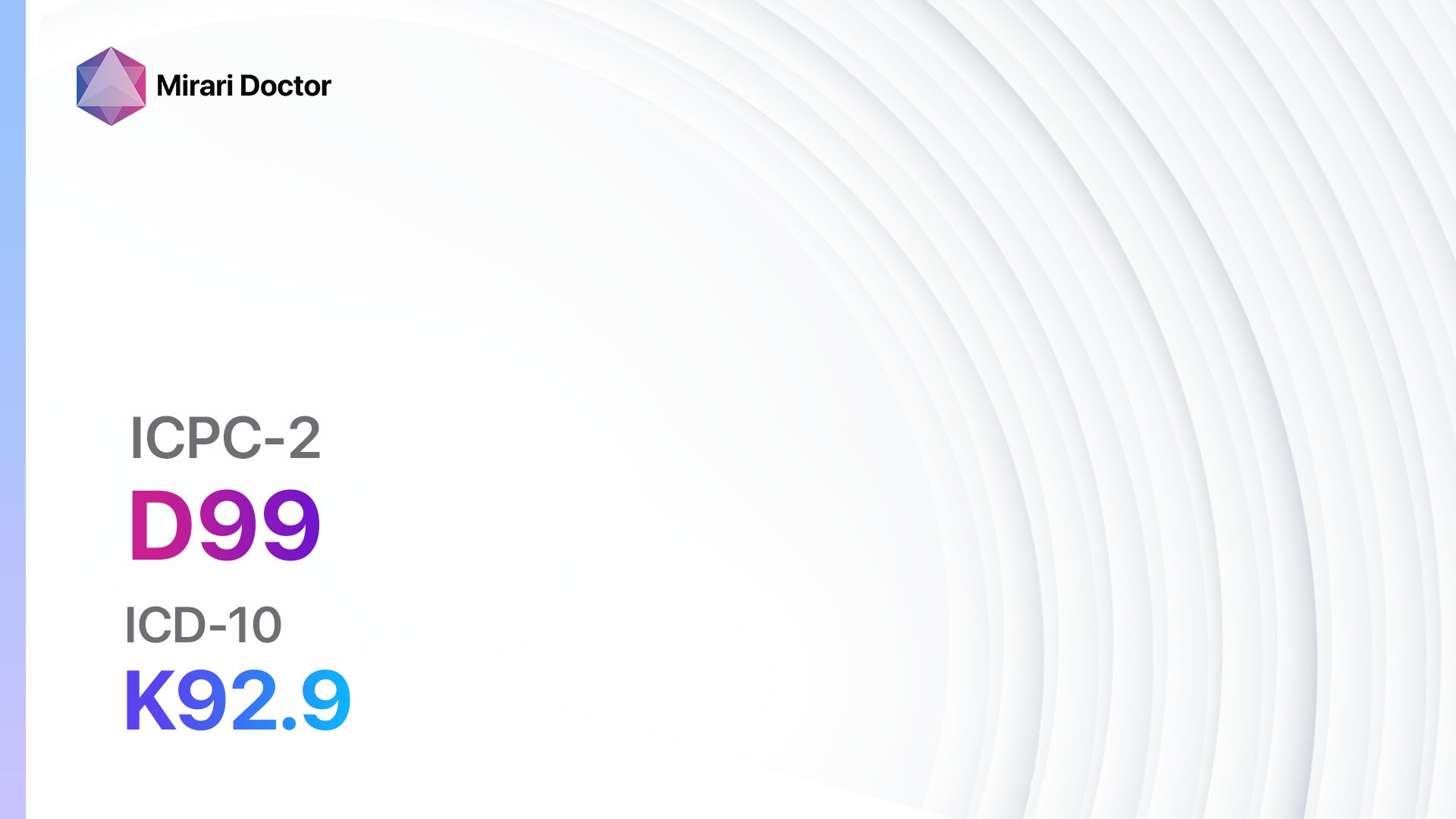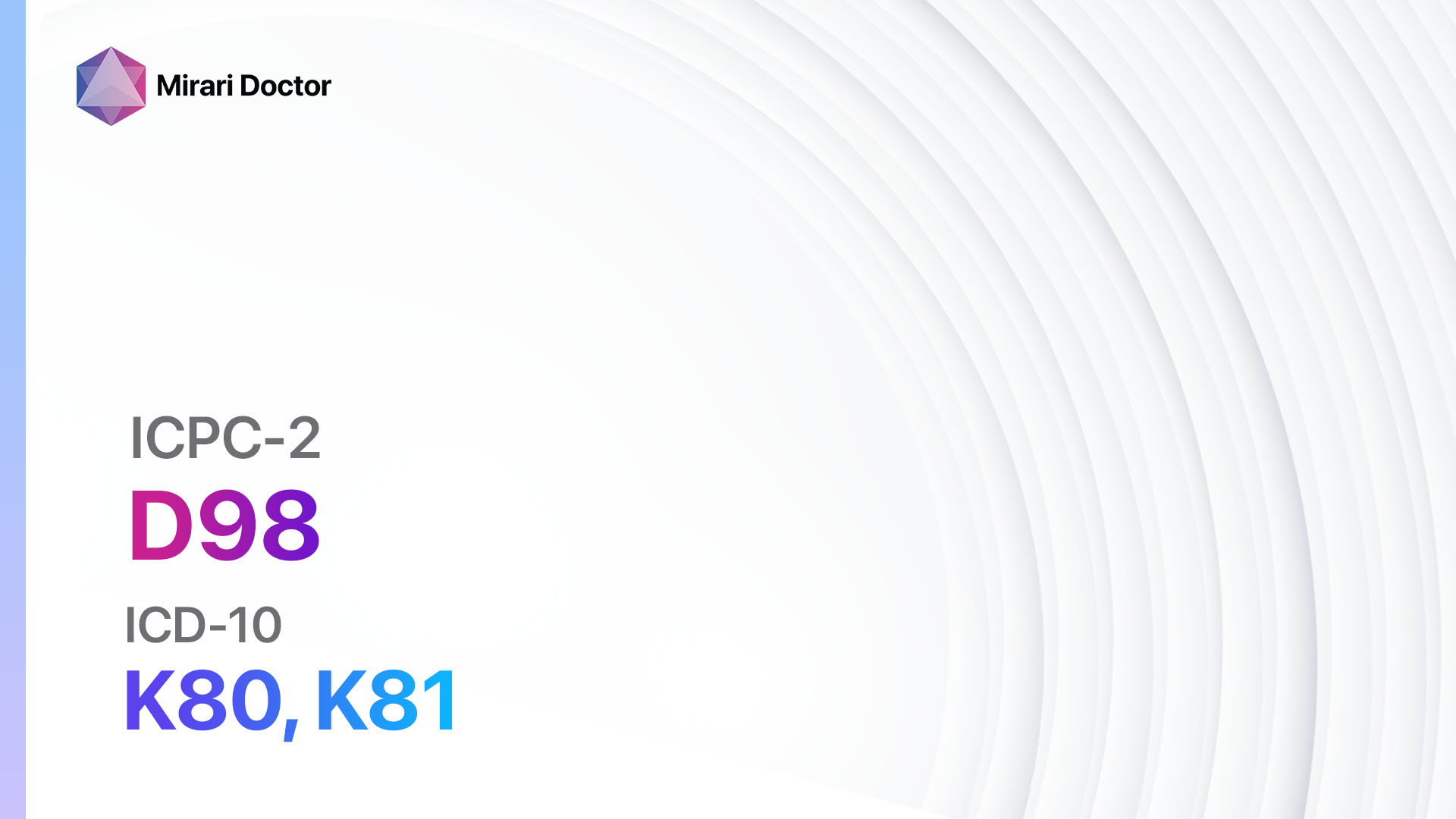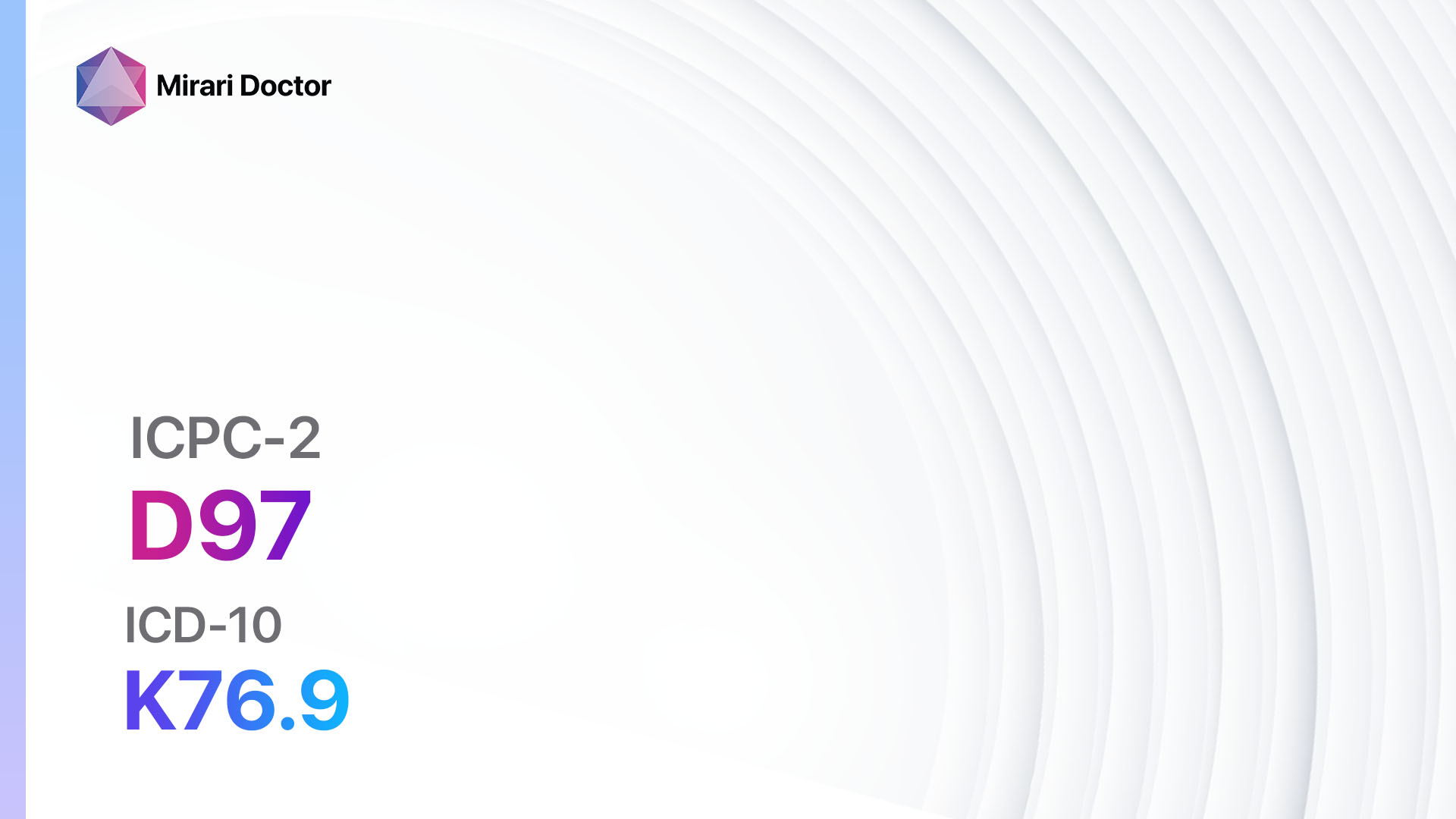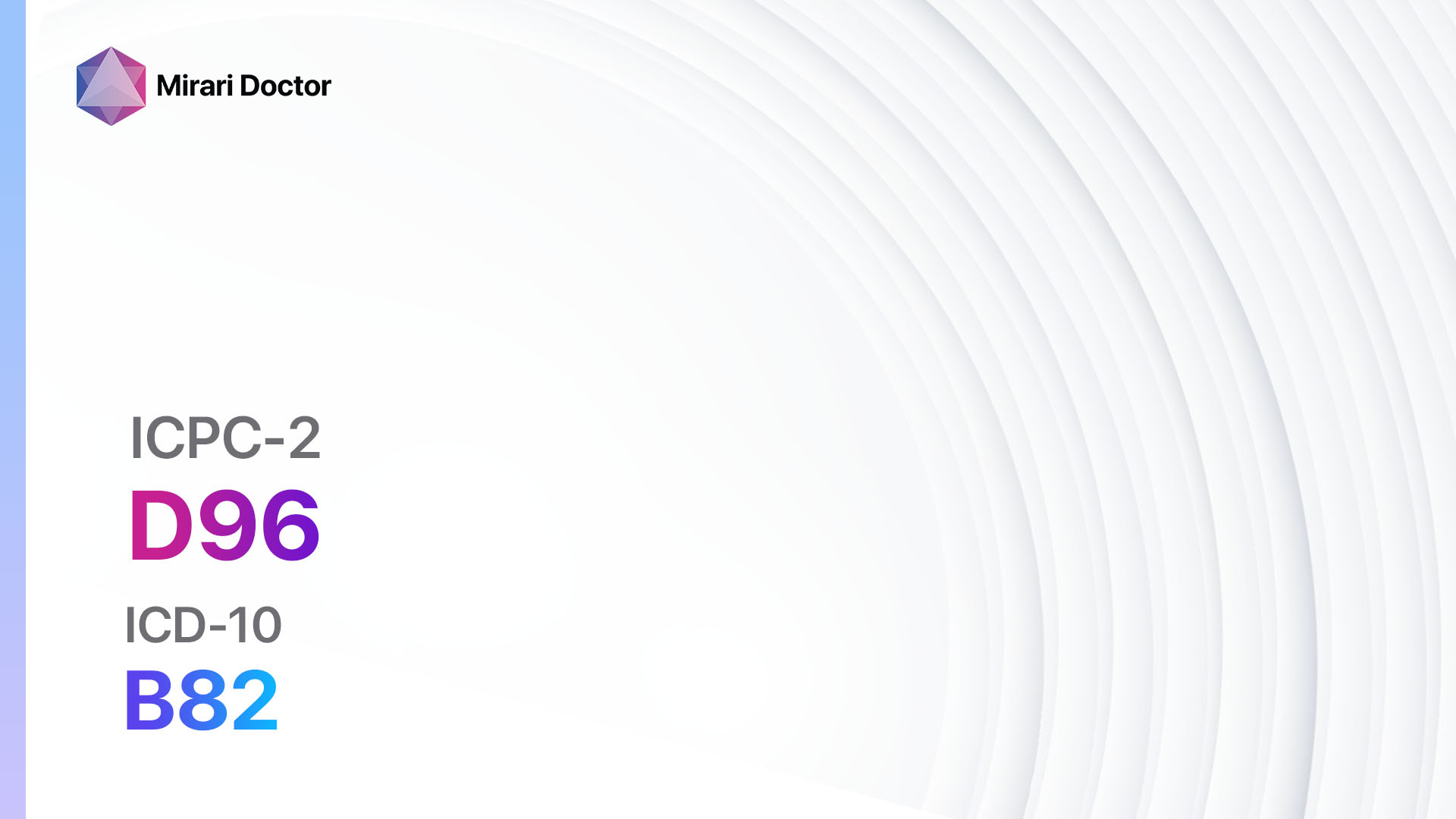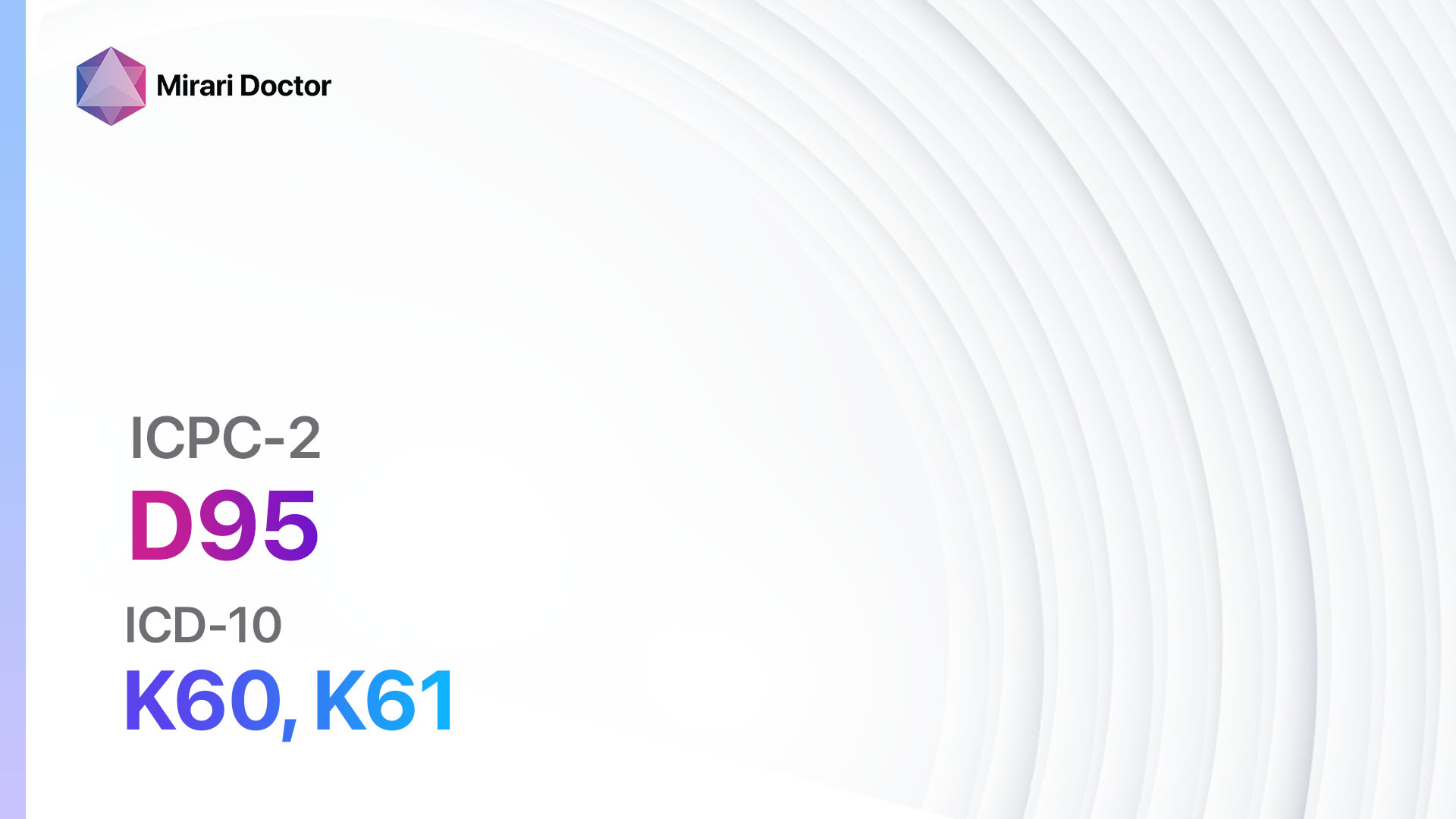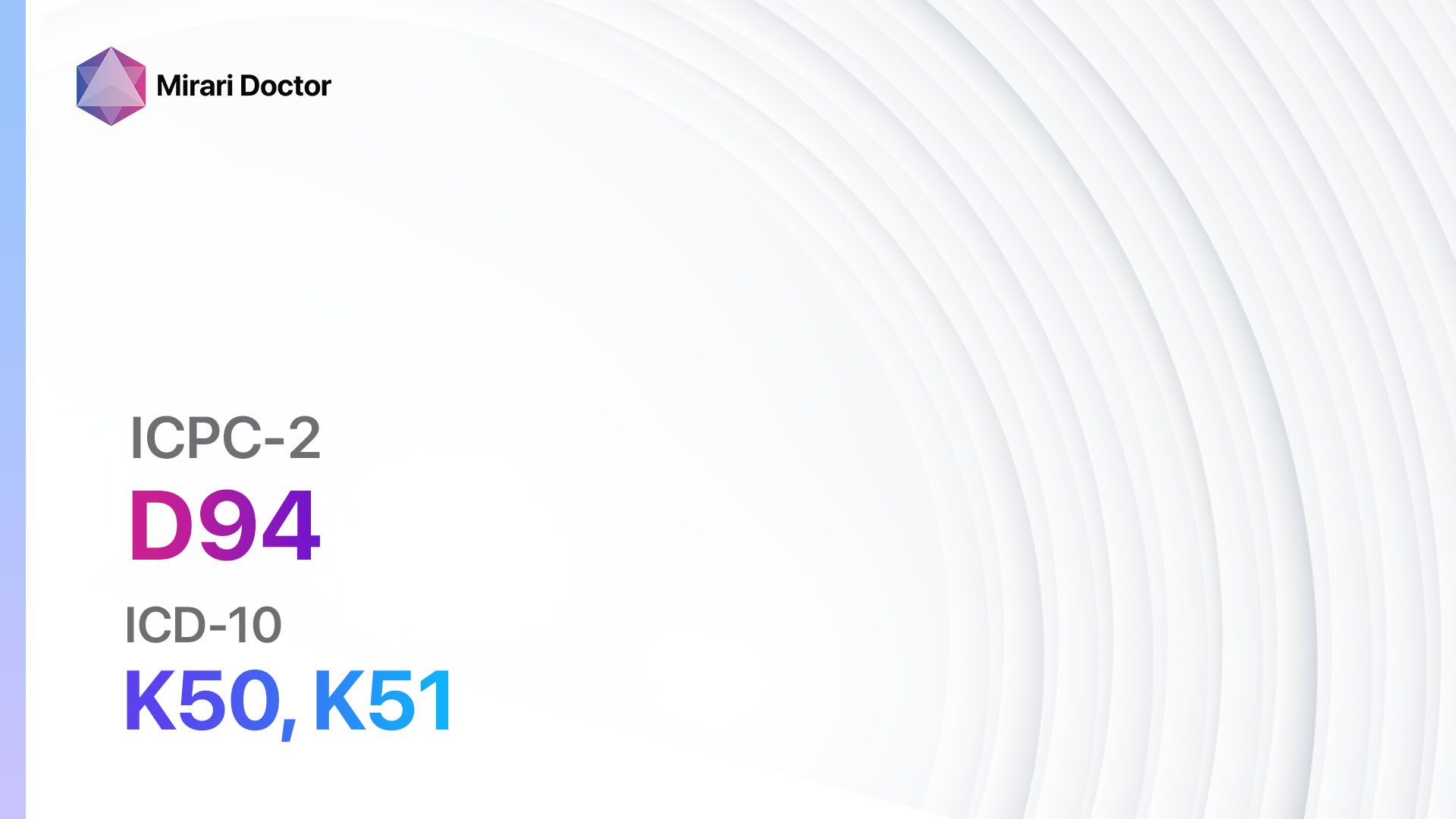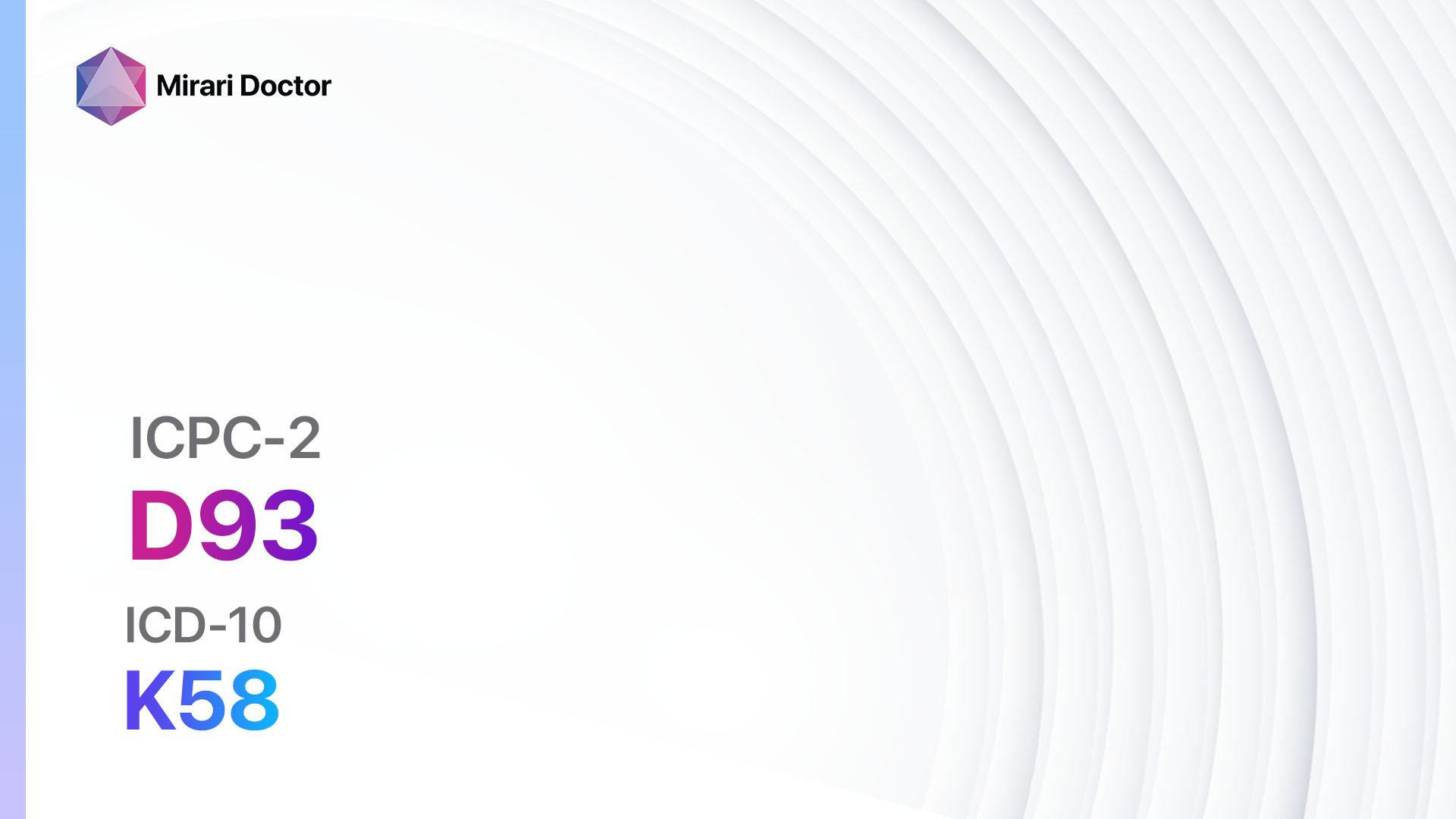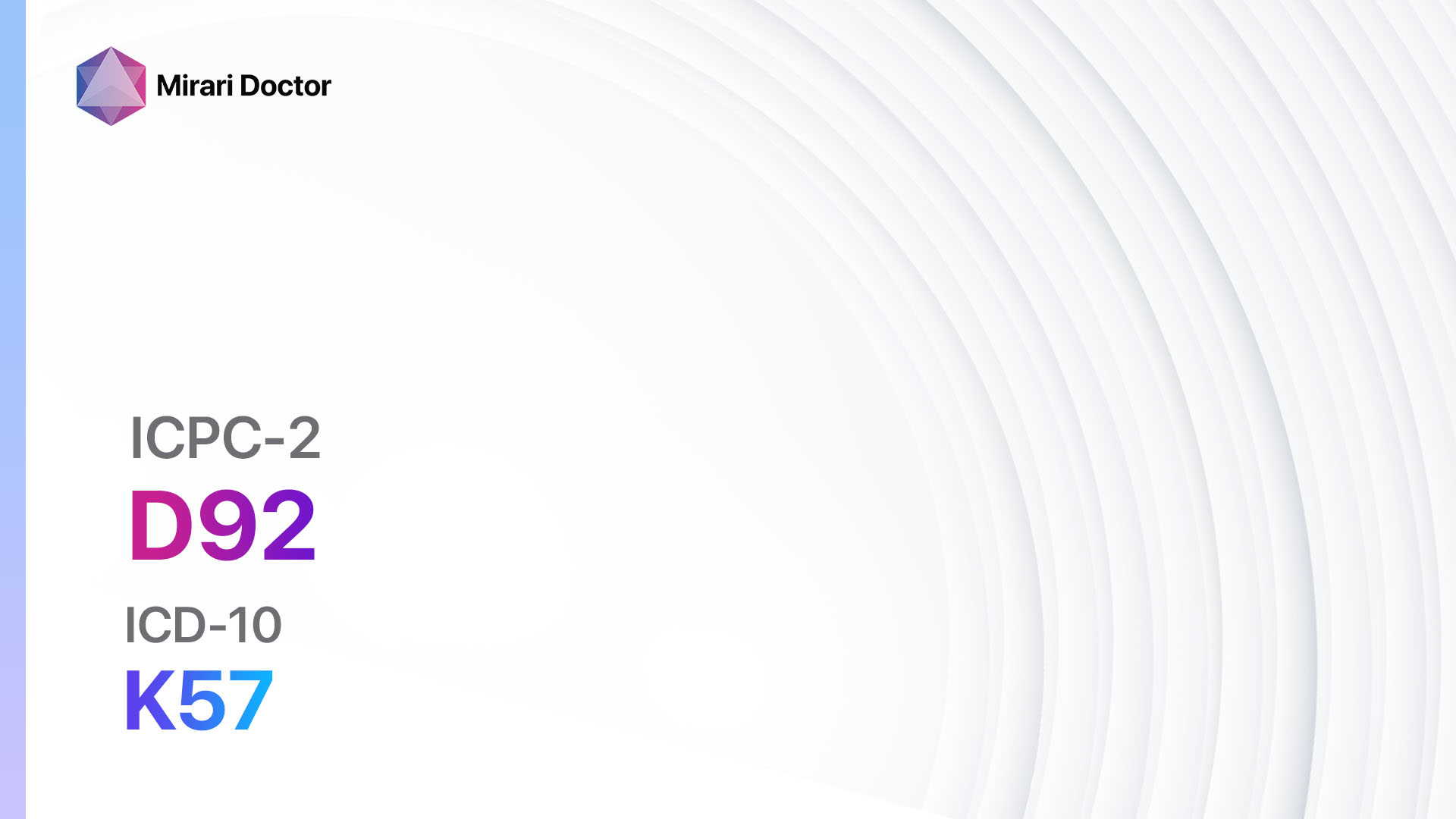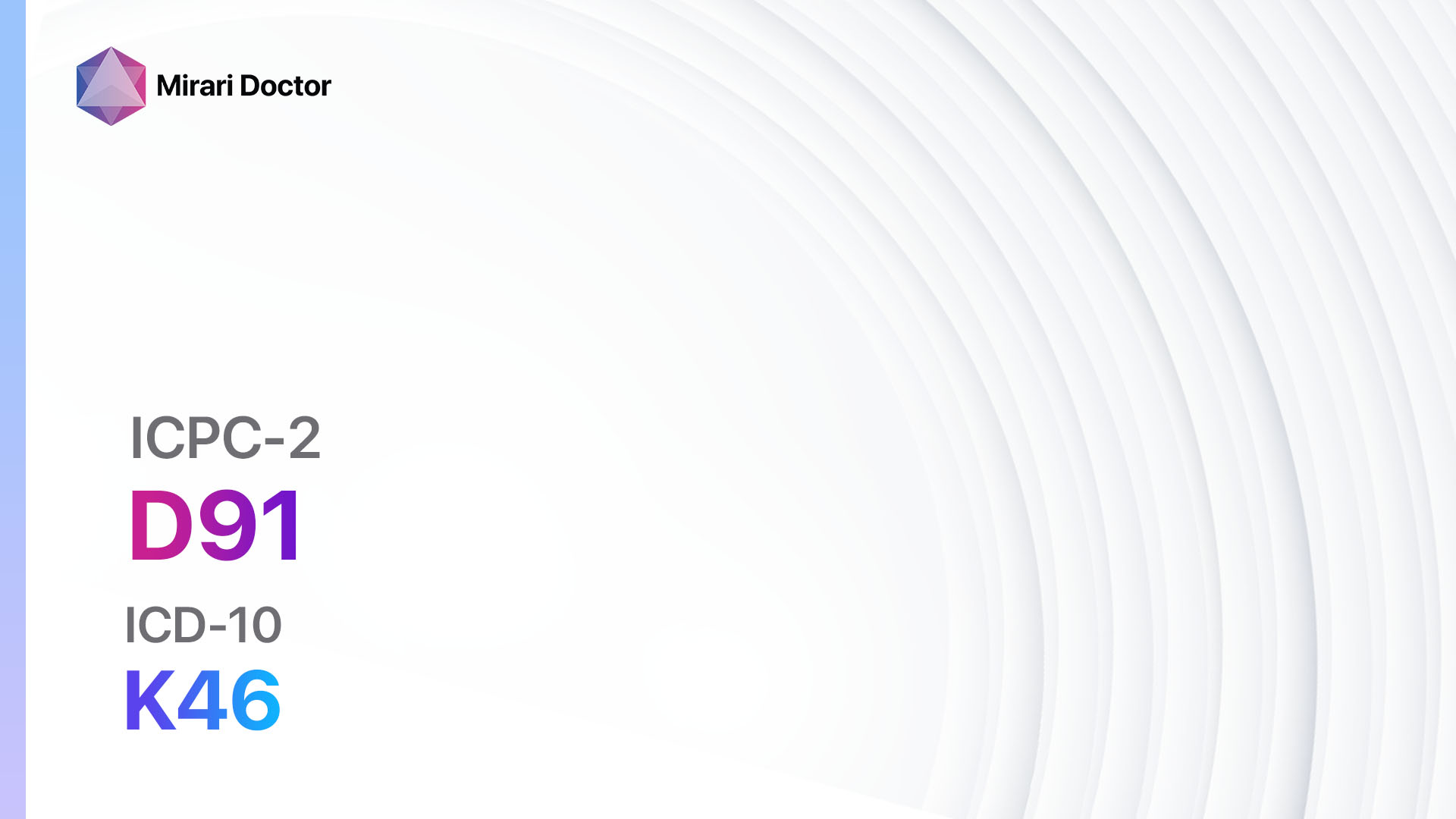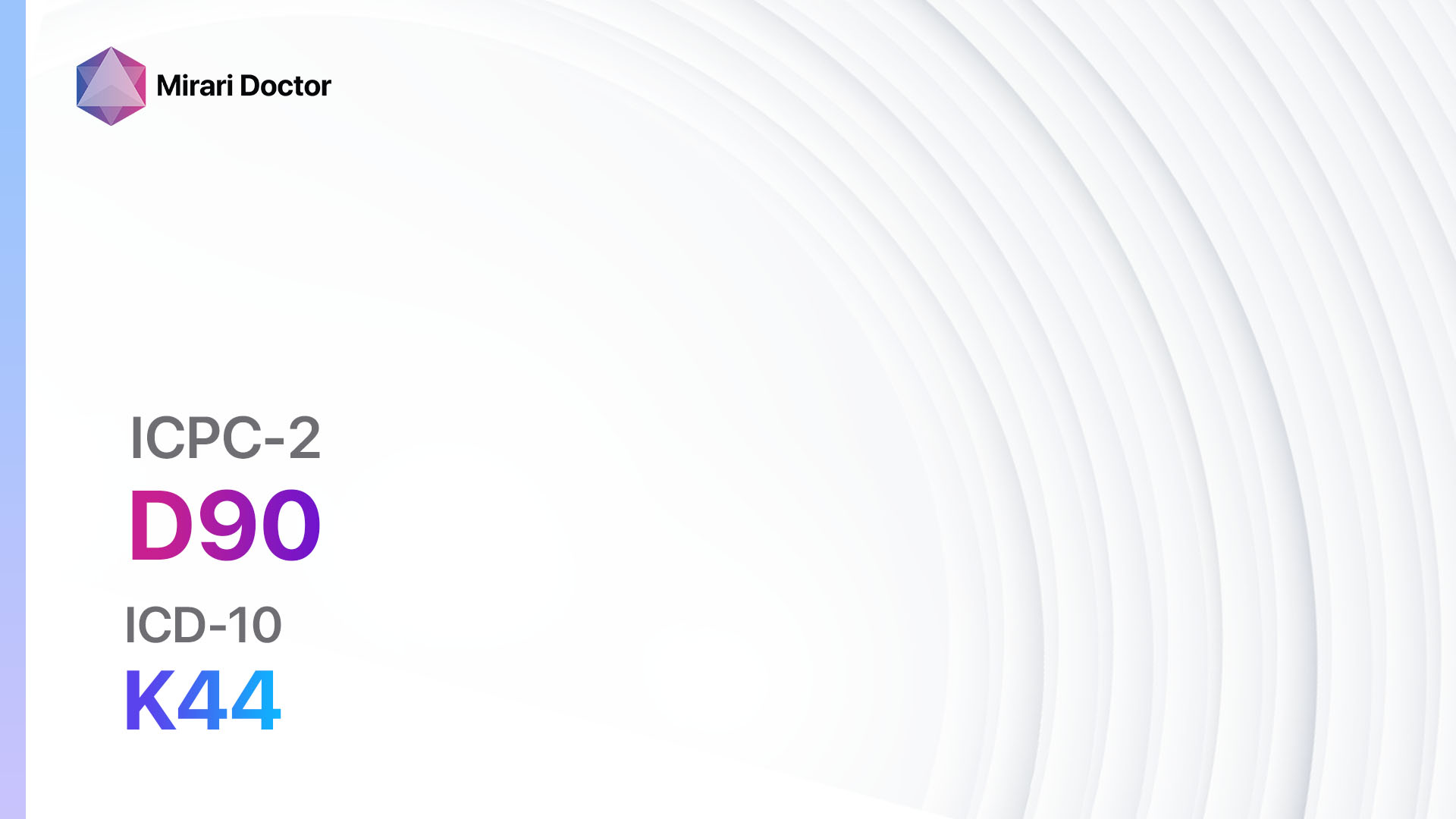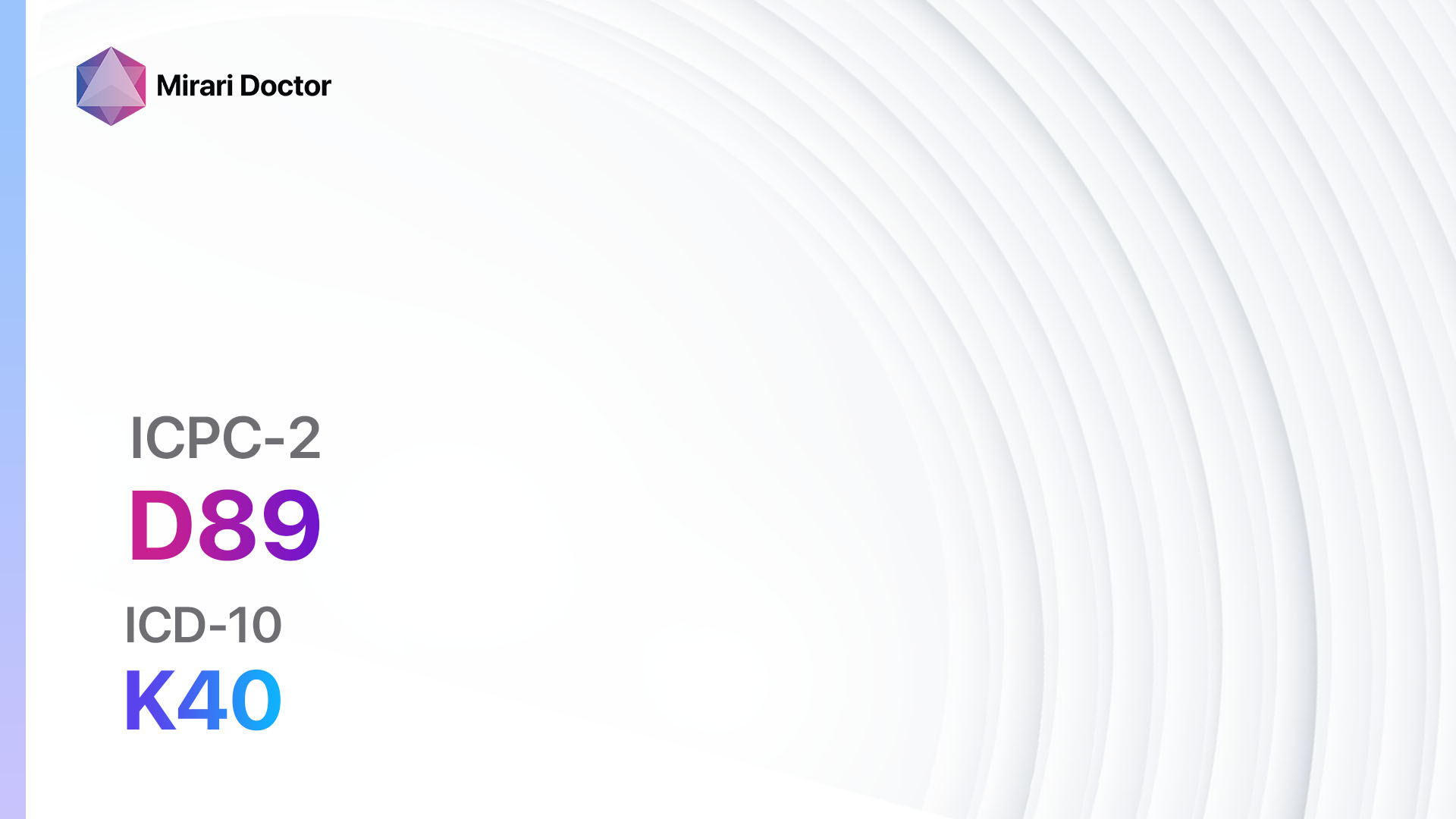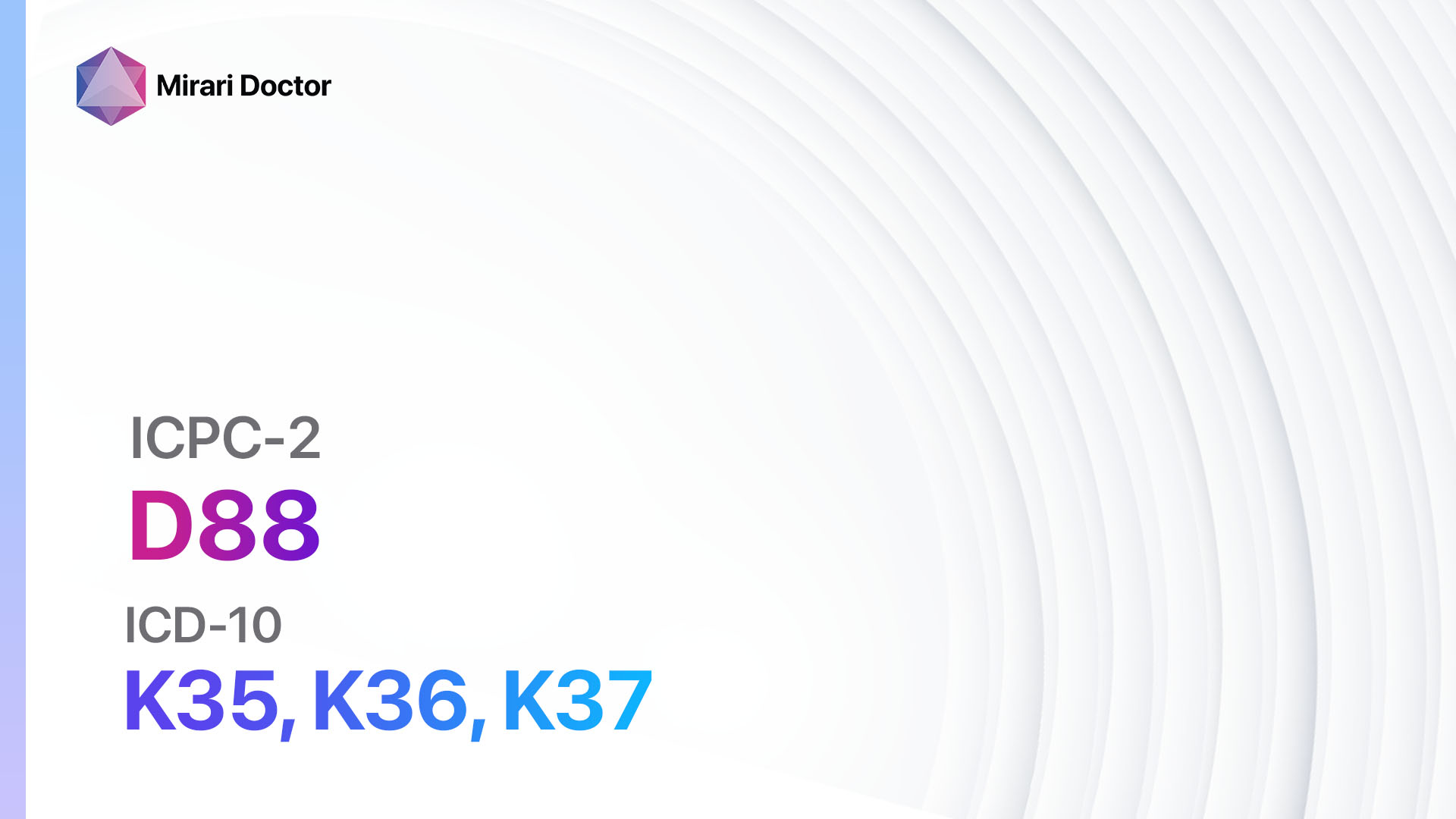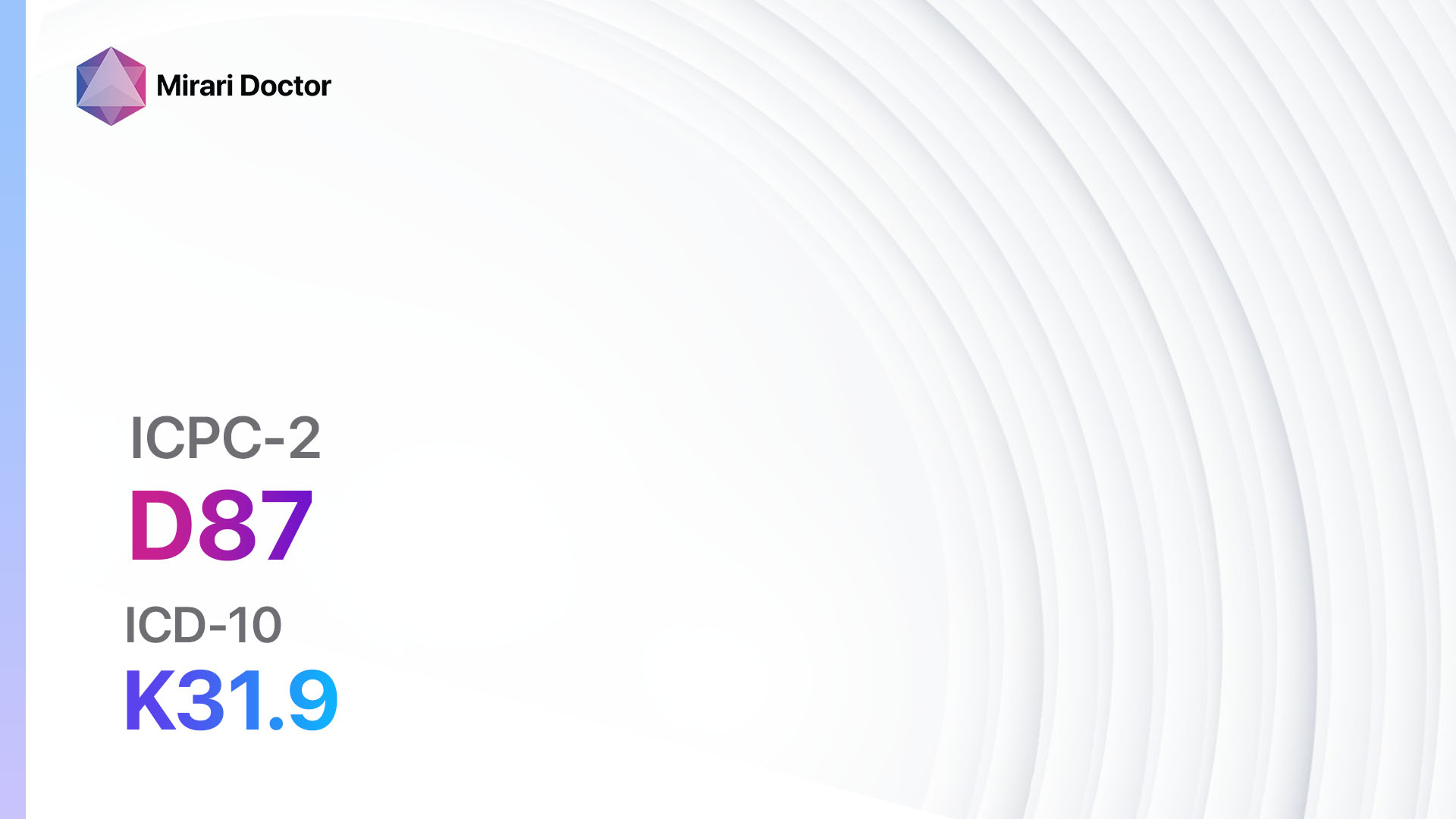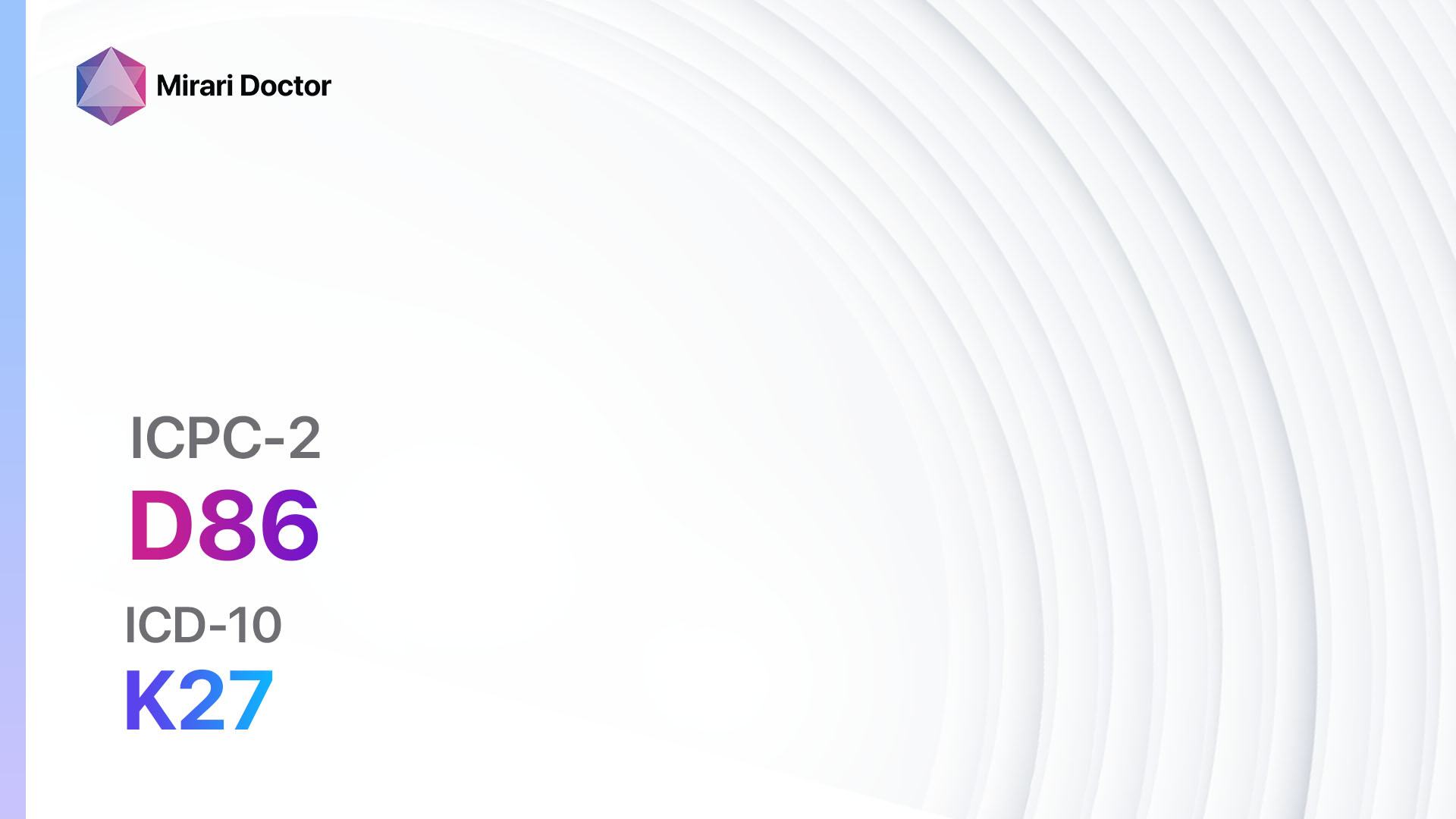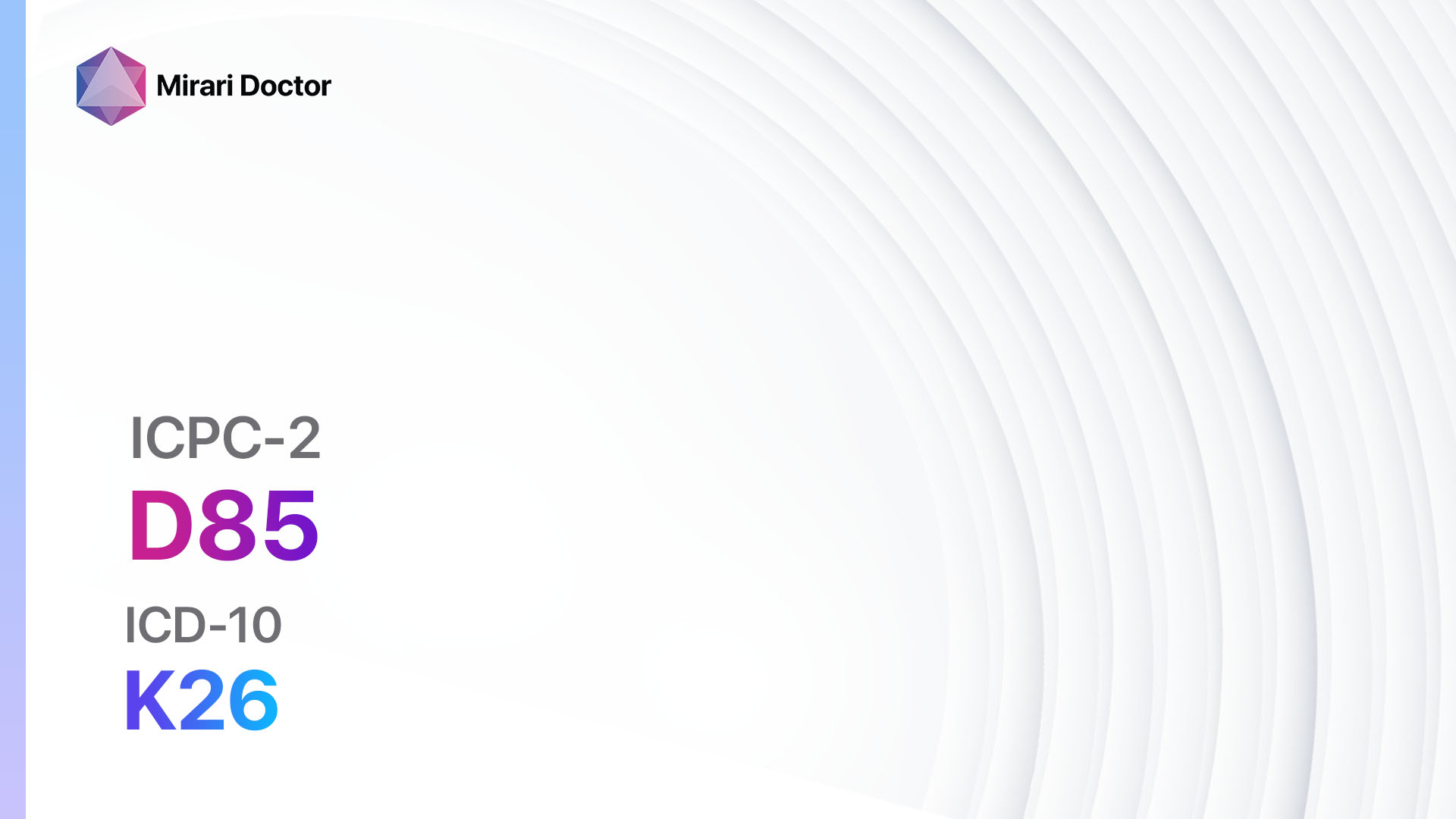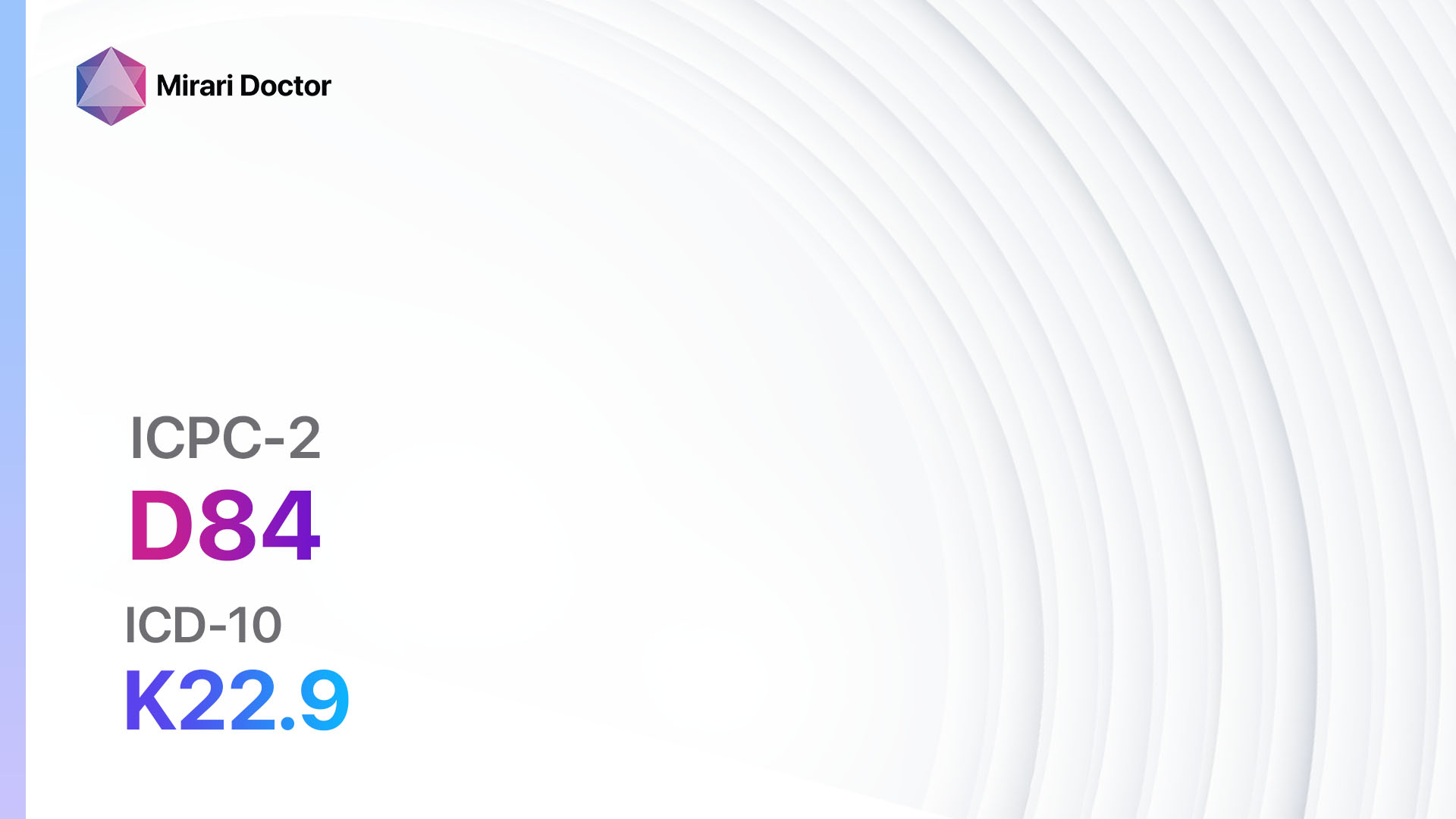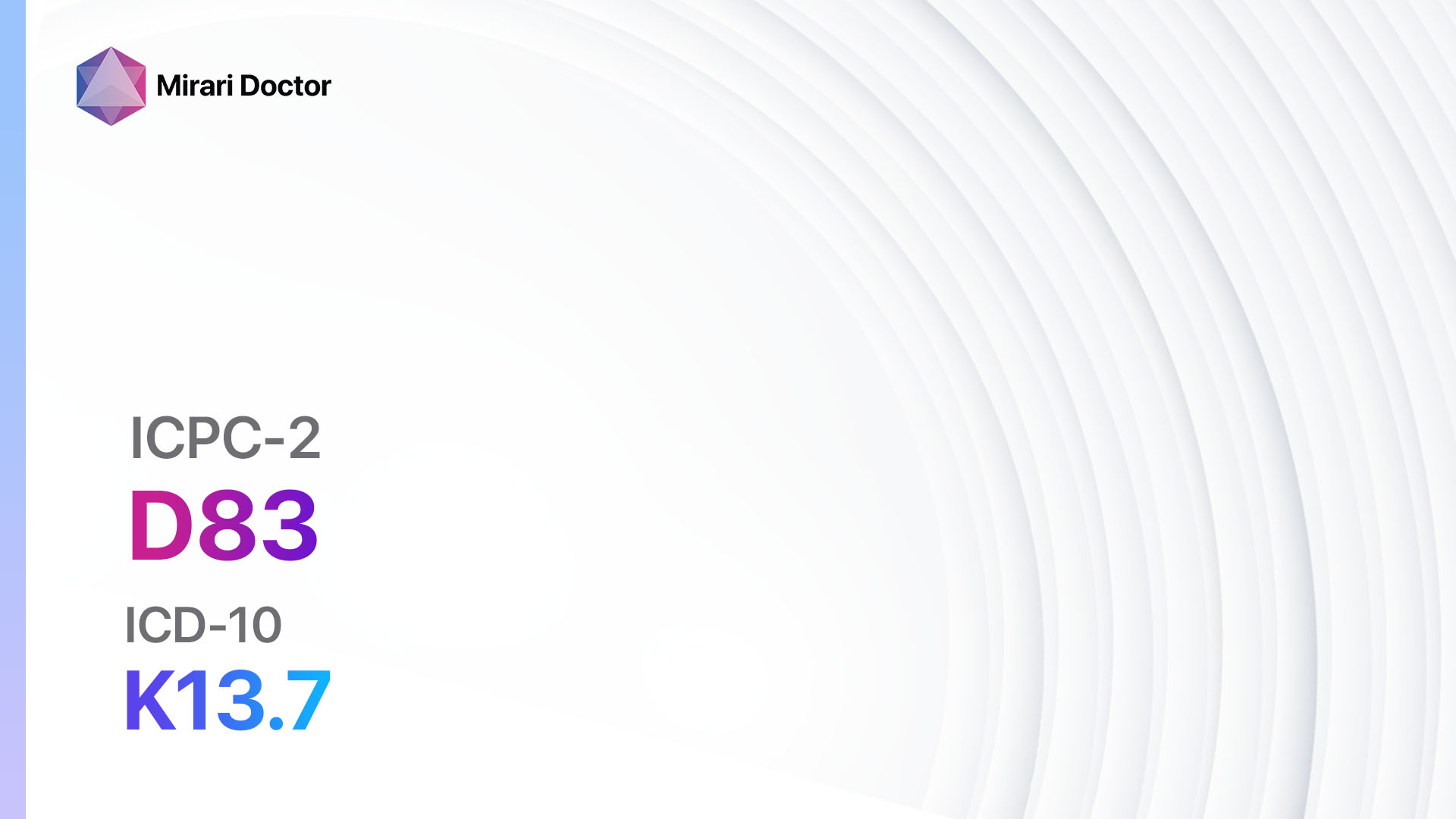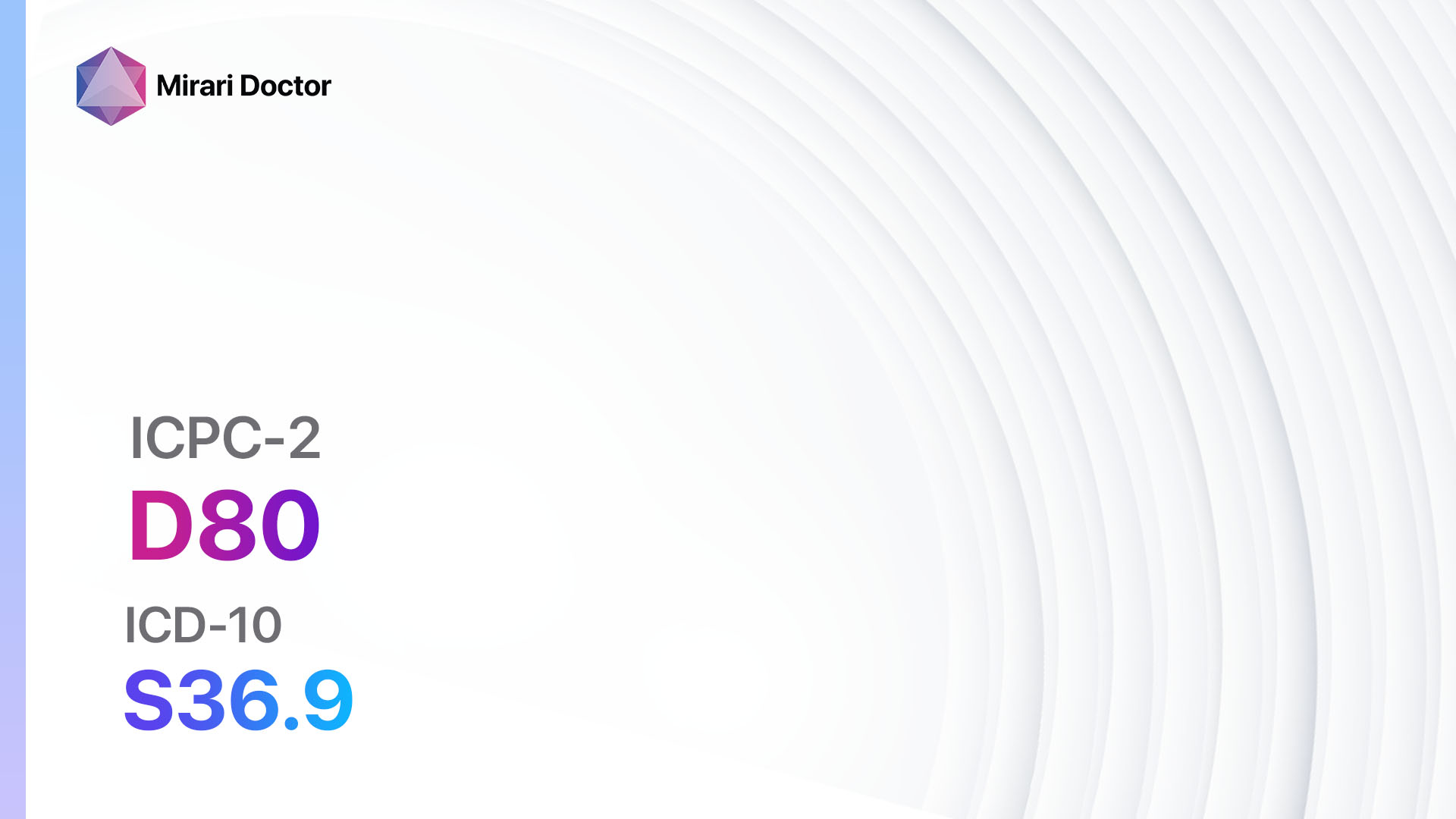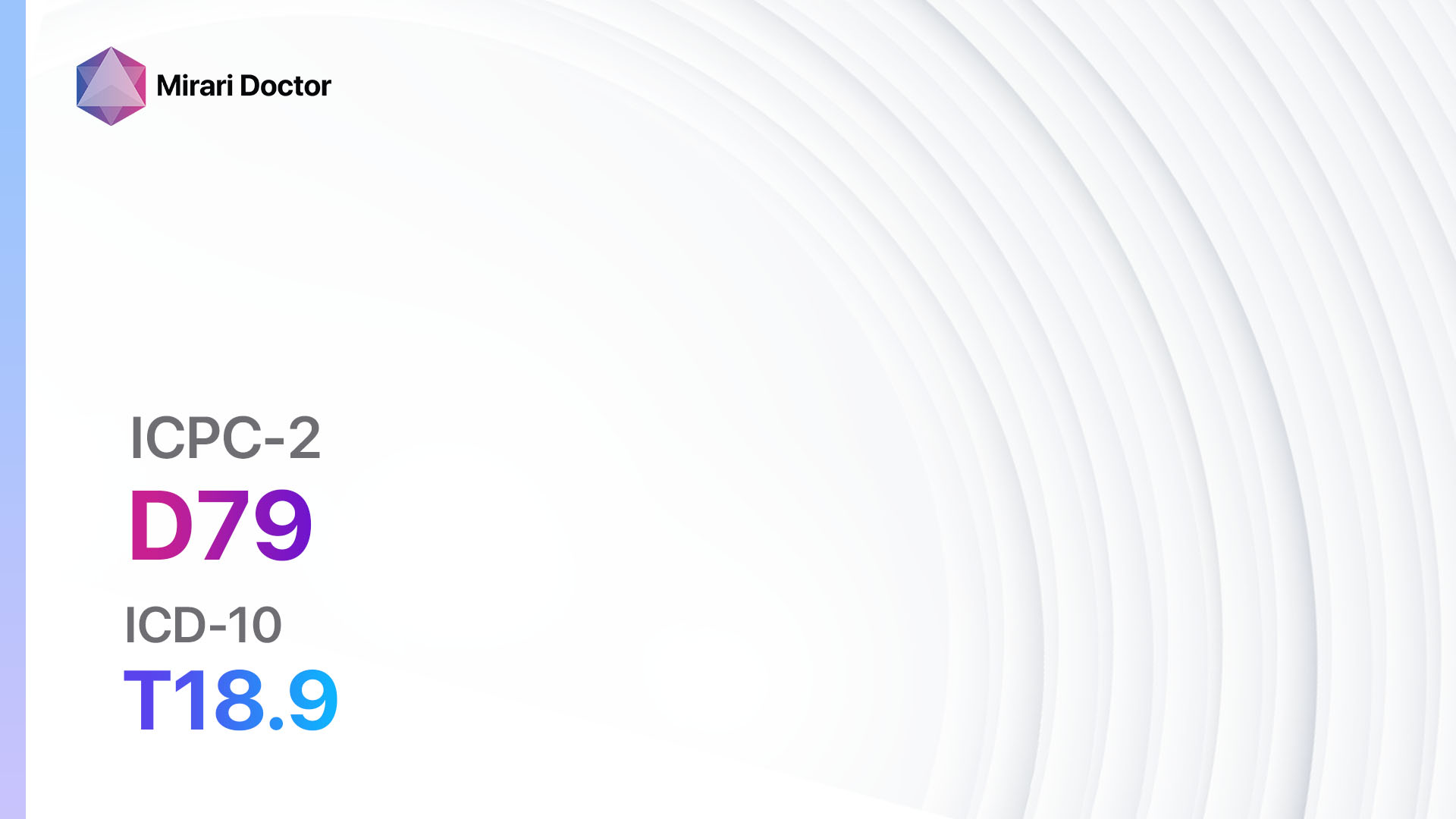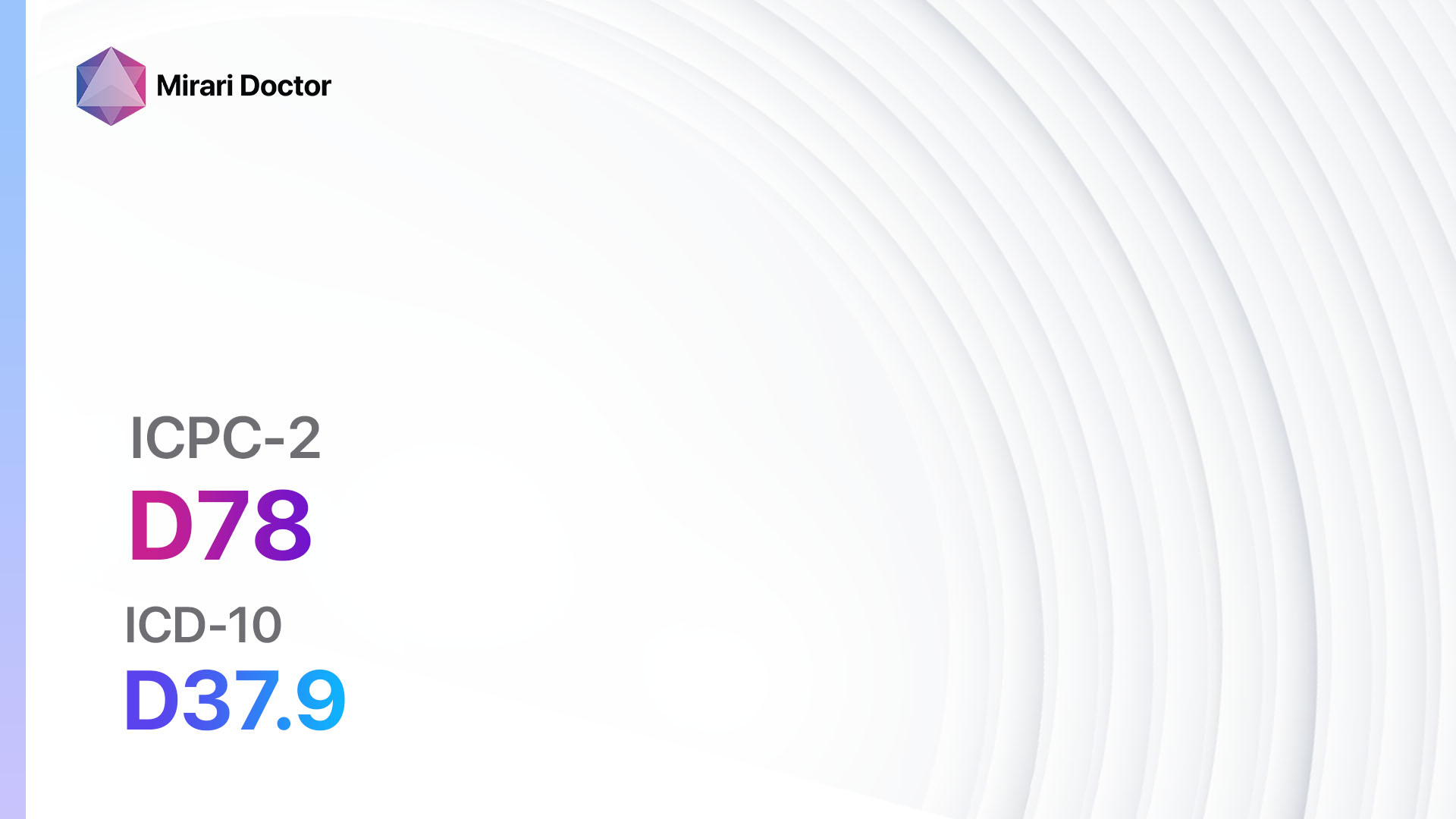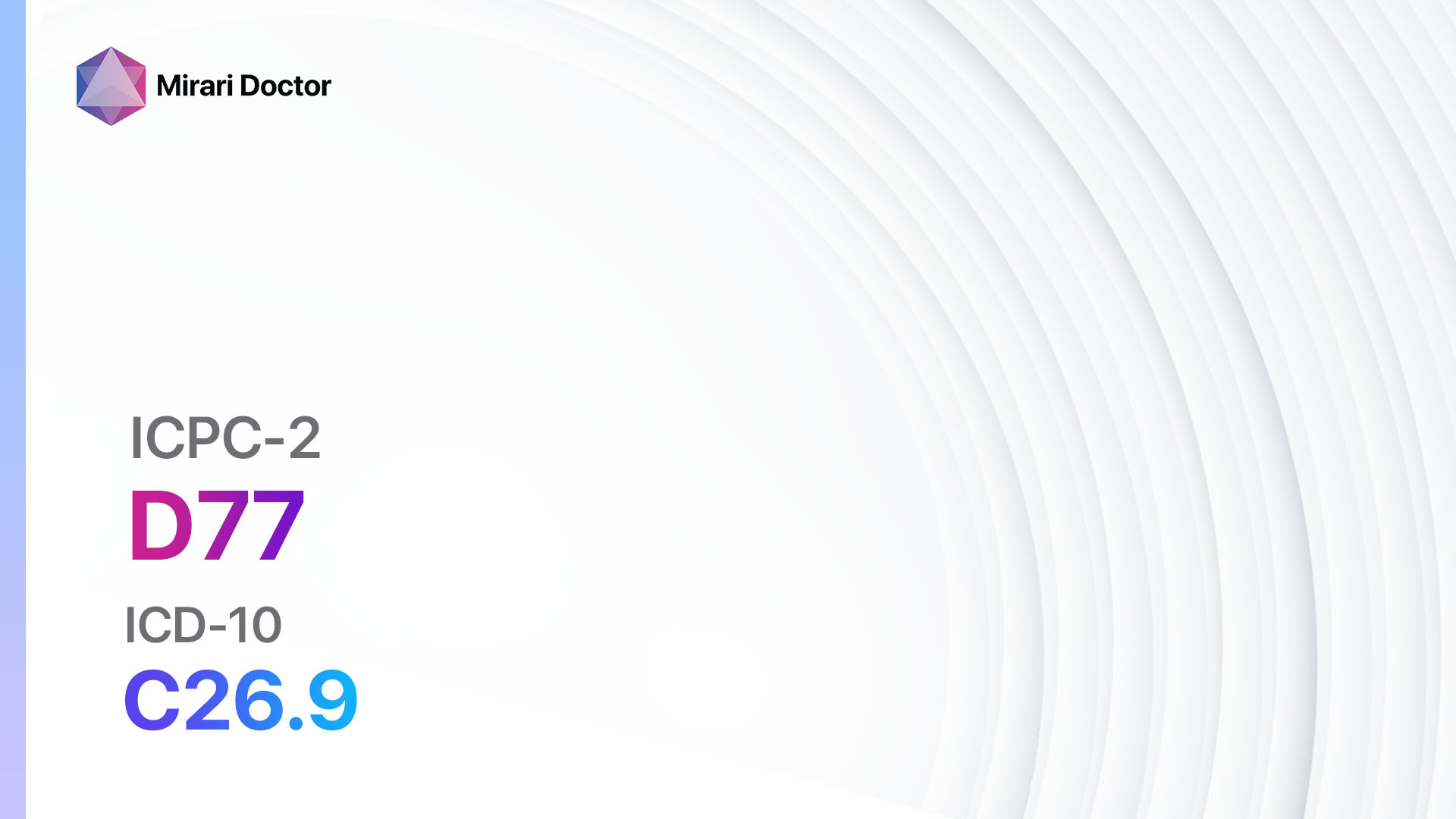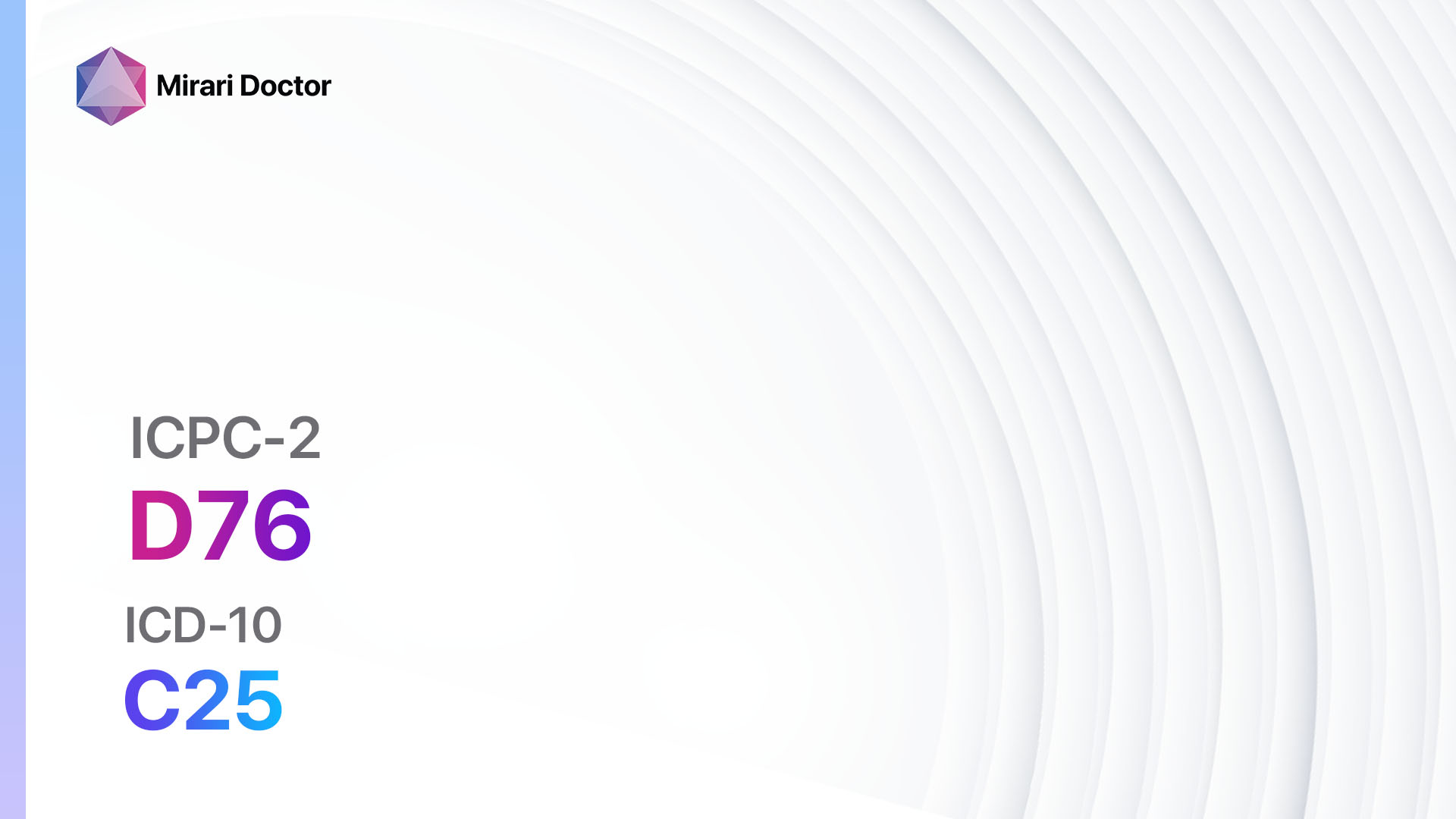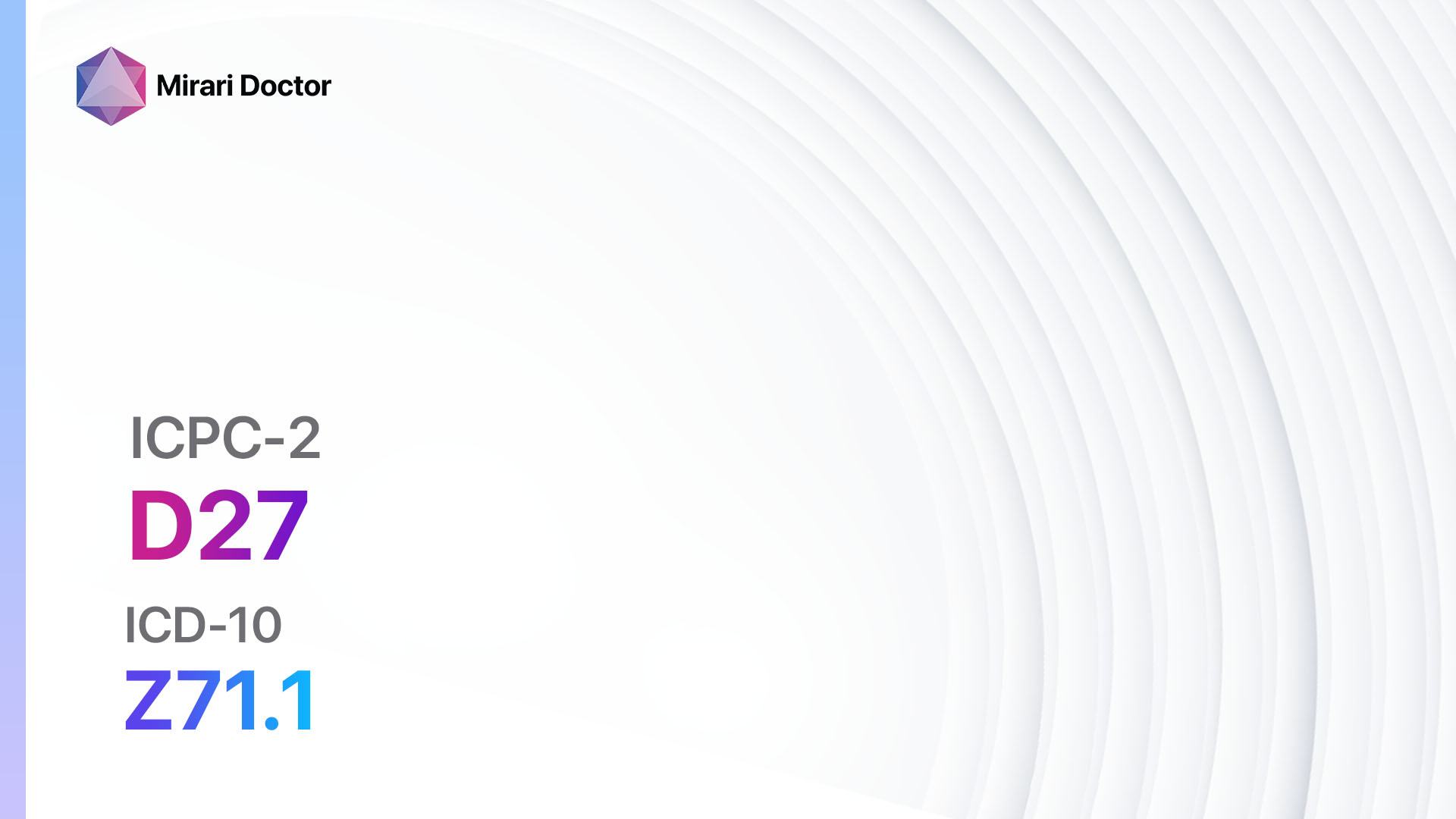
Introduction
Fear of digestive disease other (ICPC-2: D27) refers to the anxiety or fear experienced by individuals regarding the possibility of having a digestive disease that does not fall under any specific category. This fear can be debilitating and may significantly impact a person’s quality of life. The aim of this guide is to provide healthcare professionals with a comprehensive approach to diagnosing and managing patients with fear of digestive disease other.
Codes
- ICPC-2 Code: D27 Fear of digestive disease other[1]
- ICD-10 Code: Z71.1 Person with feared complaint in whom no diagnosis is made[2]
Symptoms
- Persistent worry or fear about having a digestive disease[3]
- Preoccupation with digestive symptoms or bodily sensations[4]
- Avoidance of activities or situations that may trigger anxiety about digestive health[5]
- Physical symptoms such as gastrointestinal distress, headaches, or muscle tension[6]
- Difficulty concentrating or sleeping due to worry about digestive health[7]
Causes
- Previous traumatic experience related to digestive health[8]
- Family history of digestive diseases[9]
- Exposure to media or information about digestive diseases[3]
- Generalized anxiety disorder or other anxiety disorders[10]
- Hypochondriasis or illness anxiety disorder
Diagnostic Steps
Medical History
- Gather information about the patient’s past medical history, including any previous diagnoses or treatments related to digestive health.
- Inquire about the patient’s family history of digestive diseases.
- Assess the patient’s current symptoms and their impact on daily functioning.
- Determine if the patient has any risk factors for digestive diseases, such as smoking, alcohol consumption, or a high-fat diet.
- Evaluate the patient’s mental health history, including any previous anxiety disorders or traumatic experiences.
Physical Examination
- Perform a thorough physical examination, focusing on the abdomen and gastrointestinal system.
- Look for any signs or findings that may indicate an underlying digestive disease, such as abdominal tenderness, abnormal bowel sounds, or enlarged organs.
- Assess the patient’s overall physical health and look for any signs of malnutrition or weight loss.
Laboratory Tests
- Complete blood count (CBC) to assess for any signs of infection or inflammation.
- Comprehensive metabolic panel (CMP) to evaluate liver and kidney function.
- Stool analysis to check for any abnormalities or signs of infection.
- Celiac disease panel to rule out gluten intolerance.
- Helicobacter pylori (H. pylori) test to check for the presence of this bacteria, which can cause digestive issues.
Diagnostic Imaging
- Abdominal ultrasound to visualize the organs and structures in the abdomen.
- Upper gastrointestinal (GI) series to evaluate the upper digestive tract.
- Colonoscopy or sigmoidoscopy to examine the colon and rectum.
- Magnetic resonance imaging (MRI) or computed tomography (CT) scan to obtain detailed images of the digestive system.
Other Tests
- Endoscopy to visualize the esophagus, stomach, and upper small intestine.
- Breath test to detect bacterial overgrowth in the small intestine.
- Gastric emptying study to assess the rate at which the stomach empties its contents.
- pH monitoring to measure the acidity levels in the esophagus.
- Manometry to evaluate the function of the esophagus and lower esophageal sphincter.
Follow-up and Patient Education
- Schedule regular follow-up appointments to monitor the patient’s symptoms and progress.
- Provide education about digestive diseases, their causes, and treatment options.
- Offer reassurance and support to help alleviate the patient’s fears and anxiety.
- Encourage the patient to seek therapy or counseling to address any underlying anxiety or psychological factors contributing to their fear of digestive disease.
- Discuss lifestyle modifications and stress management techniques that may help improve the patient’s overall well-being.
Possible Interventions
Traditional Interventions
Medications:
Top 5 drugs for fear of digestive disease other:
- Selective serotonin reuptake inhibitors (SSRIs) (e.g., Fluoxetine, Sertraline):
- Cost: Generic versions can be $3-$50/month.
- Contraindications: Hypersensitivity to SSRIs, concurrent use of monoamine oxidase inhibitors (MAOIs).
- Side effects: Nausea, headache, insomnia.
- Severe side effects: Serotonin syndrome, suicidal thoughts.
- Drug interactions: MAOIs, other serotonergic drugs.
- Warning: Close monitoring for worsening depression or emergence of suicidal thoughts.
- Benzodiazepines (e.g., Diazepam, Lorazepam):
- Cost: Generic versions can be $4-$50/month.
- Contraindications: Acute narrow-angle glaucoma, severe respiratory insufficiency.
- Side effects: Drowsiness, dizziness, confusion.
- Severe side effects: Respiratory depression, dependence.
- Drug interactions: Alcohol, opioids.
- Warning: Risk of dependence and withdrawal symptoms with long-term use.
- Beta-blockers (e.g., Propranolol, Atenolol):
- Cost: Generic versions can be $4-$30/month.
- Contraindications: Severe bradycardia, heart block.
- Side effects: Fatigue, dizziness, bradycardia.
- Severe side effects: Bronchospasm, heart failure.
- Drug interactions: Calcium channel blockers, insulin.
- Warning: Should not be abruptly stopped.
- Antidepressants (e.g., Amitriptyline, Venlafaxine):
- Cost: Generic versions can be $4-$50/month.
- Contraindications: Recent myocardial infarction, concurrent use of MAOIs.
- Side effects: Dry mouth, constipation, sedation.
- Severe side effects: Serotonin syndrome, suicidal thoughts.
- Drug interactions: MAOIs, other serotonergic drugs.
- Warning: Close monitoring for worsening depression or emergence of suicidal thoughts.
- Antipsychotics (e.g., Quetiapine, Risperidone):
- Cost: Generic versions can be $10-$100/month.
- Contraindications: Severe CNS depression, dementia-related psychosis.
- Side effects: Sedation, weight gain, extrapyramidal symptoms.
- Severe side effects: Neuroleptic malignant syndrome, tardive dyskinesia.
- Drug interactions: Other antipsychotics, CNS depressants.
- Warning: Increased risk of mortality in elderly patients with dementia-related psychosis.
Alternative Drugs:
- Buspirone: An anxiolytic medication that does not cause sedation or dependence.
- Hydroxyzine: An antihistamine with anxiolytic properties.
- Pregabalin: An anticonvulsant medication used for anxiety disorders.
- Gabapentin: Another anticonvulsant medication that can help with anxiety symptoms.
- Mirtazapine: An antidepressant with anxiolytic effects.
Surgical Procedures:
- There are no surgical procedures specifically indicated for fear of digestive disease other. However, in cases where an underlying digestive disease is diagnosed, appropriate surgical interventions may be recommended.
Alternative Interventions
- Cognitive-behavioral therapy (CBT): A form of psychotherapy that helps individuals identify and change negative thought patterns and behaviors. Cost: $100-$200 per session.
- Mindfulness-based stress reduction (MBSR): A practice that combines mindfulness meditation, body awareness, and yoga to reduce stress and anxiety. Cost: $200-$400 for an 8-week program.
- Hypnotherapy: A therapeutic technique that uses hypnosis to help individuals explore and address their fears and anxieties. Cost: $75-$150 per session.
- Support groups: Joining a support group with individuals who have similar fears or experiences can provide emotional support and coping strategies. Cost: Varies depending on the organization or group.
- Relaxation techniques: Teaching patients relaxation techniques such as deep breathing exercises, progressive muscle relaxation, or guided imagery can help reduce anxiety. Cost: Free or minimal cost for instructional materials.
Lifestyle Interventions
- Regular exercise: Engaging in physical activity can help reduce anxiety and improve overall well-being. Cost: Varies depending on the chosen activity (e.g., gym membership, fitness classes).
- Healthy diet: Encouraging a balanced diet rich in fruits, vegetables, whole grains, and lean proteins can support digestive health and overall wellness. Cost: Varies depending on food choices and dietary preferences.
- Stress management techniques: Teaching patients stress management techniques such as meditation, yoga, or journaling can help reduce anxiety and promote relaxation. Cost: Free or minimal cost for instructional materials.
- Sleep hygiene: Educating patients about the importance of good sleep hygiene practices, such as maintaining a regular sleep schedule and creating a conducive sleep environment, can improve overall well-being. Cost: Free or minimal cost for instructional materials.
- Avoidance of triggers: Encouraging patients to identify and avoid triggers that exacerbate their fear or anxiety about digestive health can help reduce symptoms. Cost: None.
It is important to note that the cost ranges provided are approximate and may vary depending on the location and availability of the interventions.
Mirari Cold Plasma Alternative Intervention
Understanding Mirari Cold Plasma
- Safe and Non-Invasive Treatment: Mirari Cold Plasma is a safe and non-invasive treatment option for various skin conditions. It does not require incisions, minimizing the risk of scarring, bleeding, or tissue damage.
- Efficient Extraction of Foreign Bodies: Mirari Cold Plasma facilitates the removal of foreign bodies from the skin by degrading and dissociating organic matter, allowing easier access and extraction.
- Pain Reduction and Comfort: Mirari Cold Plasma has a local analgesic effect, providing pain relief during the treatment, making it more comfortable for the patient.
- Reduced Risk of Infection: Mirari Cold Plasma has antimicrobial properties, effectively killing bacteria and reducing the risk of infection.
- Accelerated Healing and Minimal Scarring: Mirari Cold Plasma stimulates wound healing and tissue regeneration, reducing healing time and minimizing the formation of scars.
Mirari Cold Plasma Prescription
Video instructions for using Mirari Cold Plasma Device – D27 Fear of digestive disease other (ICD-10:Z71.1)
| Mild | Moderate | Severe |
| Mode setting: 1 (Infection) Location: 2 (Prostate & Uterus) Morning: 15 minutes, Evening: 15 minutes |
Mode setting: 1 (Infection) Location: 2 (Prostate & Uterus) Morning: 30 minutes, Lunch: 30 minutes, Evening: 30 minutes |
Mode setting: 1 (Infection) Location: 2 (Prostate & Uterus) Morning: 30 minutes, Lunch: 30 minutes, Evening: 30 minutes |
| Mode setting: 1 (Infection) Location: 3 (Kidney, Liver & Spleen) Morning: 15 minutes, Evening: 15 minutes |
Mode setting: 1 (Infection) Location: 3 (Kidney, Liver & Spleen) Morning: 30 minutes, Lunch: 30 minutes, Evening: 30 minutes |
Mode setting: 1 (Infection) Location: 3 (Kidney, Liver & Spleen) Morning: 30 minutes, Lunch: 30 minutes, Evening: 30 minutes |
| Mode setting: 2 (Wound Healing) Location: 3 (Kidney, Liver & Spleen) Morning: 15 minutes, Evening: 15 minutes |
Mode setting: 2 (Wound Healing) Location: 3 (Kidney, Liver & Spleen) Morning: 30 minutes, Lunch: 30 minutes, Evening: 30 minutes |
Mode setting: 2 (Wound Healing) Location: 3 (Kidney, Liver & Spleen) Morning: 30 minutes, Lunch: 30 minutes, Evening: 30 minutes |
| Mode setting: 7 (Immunotherapy) Location: 1 (Sacrum) Morning: 15 minutes, Evening: 15 minutes |
Mode setting: 7 (Immunotherapy) Location: 1 (Sacrum) Morning: 30 minutes, Lunch: 30 minutes, Evening: 30 minutes |
Mode setting: 7 (Immunotherapy) Location: 1 (Sacrum) Morning: 30 minutes, Lunch: 30 minutes, Evening: 30 minutes |
| Total Morning: 60 minutes approx. $10 USD, Evening: 60 minutes approx. $10 USD |
Total Morning: 120 minutes approx. $20 USD, Lunch: 120 minutes approx. $20 USD, Evening: 120 minutes approx. $20 USD, |
Total Morning: 120 minutes approx. $20 USD, Lunch: 120 minutes approx. $20 USD, Evening: 120 minutes approx. $20 USD, |
| Usual treatment for 7-60 days approx. $140 USD – $1200 USD | Usual treatment for 6-8 weeks approx. $2,520 USD – $3,360 USD |
Usual treatment for 3-6 months approx. $5,400 USD – $10,800 USD
|
 |
|
Use the Mirari Cold Plasma device to treat Fear of digestive disease other effectively.
WARNING: MIRARI COLD PLASMA IS DESIGNED FOR THE HUMAN BODY WITHOUT ANY ARTIFICIAL OR THIRD PARTY PRODUCTS. USE OF OTHER PRODUCTS IN COMBINATION WITH MIRARI COLD PLASMA MAY CAUSE UNPREDICTABLE EFFECTS, HARM OR INJURY. PLEASE CONSULT A MEDICAL PROFESSIONAL BEFORE COMBINING ANY OTHER PRODUCTS WITH USE OF MIRARI.
Step 1: Cleanse the Skin
- Start by cleaning the affected area of the skin with a gentle cleanser or mild soap and water. Gently pat the area dry with a clean towel.
Step 2: Prepare the Mirari Cold Plasma device
- Ensure that the Mirari Cold Plasma device is fully charged or has fresh batteries as per the manufacturer’s instructions. Make sure the device is clean and in good working condition.
- Switch on the Mirari device using the power button or by following the specific instructions provided with the device.
- Some Mirari devices may have adjustable settings for intensity or treatment duration. Follow the manufacturer’s instructions to select the appropriate settings based on your needs and the recommended guidelines.
Step 3: Apply the Device
- Place the Mirari device in direct contact with the affected area of the skin. Gently glide or hold the device over the skin surface, ensuring even coverage of the area experiencing.
- Slowly move the Mirari device in a circular motion or follow a specific pattern as indicated in the user manual. This helps ensure thorough treatment coverage.
Step 4: Monitor and Assess:
- Keep track of your progress and evaluate the effectiveness of the Mirari device in managing your Fear of digestive disease other. If you have any concerns or notice any adverse reactions, consult with your health care professional.
Note
This guide is for informational purposes only and should not replace the advice of a medical professional. Always consult with your healthcare provider or a qualified medical professional for personal advice, diagnosis, or treatment. Do not solely rely on the information presented here for decisions about your health. Use of this information is at your own risk. The authors of this guide, nor any associated entities or platforms, are not responsible for any potential adverse effects or outcomes based on the content.
Mirari Cold Plasma System Disclaimer
- Purpose: The Mirari Cold Plasma System is a Class 2 medical device designed for use by trained healthcare professionals. It is registered for use in Thailand and Vietnam. It is not intended for use outside of these locations.
- Informational Use: The content and information provided with the device are for educational and informational purposes only. They are not a substitute for professional medical advice or care.
- Variable Outcomes: While the device is approved for specific uses, individual outcomes can differ. We do not assert or guarantee specific medical outcomes.
- Consultation: Prior to utilizing the device or making decisions based on its content, it is essential to consult with a Certified Mirari Tele-Therapist and your medical healthcare provider regarding specific protocols.
- Liability: By using this device, users are acknowledging and accepting all potential risks. Neither the manufacturer nor the distributor will be held accountable for any adverse reactions, injuries, or damages stemming from its use.
- Geographical Availability: This device has received approval for designated purposes by the Thai and Vietnam FDA. As of now, outside of Thailand and Vietnam, the Mirari Cold Plasma System is not available for purchase or use.
References
- ICPC-2 – International Classification of Primary Care, Second edition. World Organization of Family Doctors (WONCA). Available at: https://www.gesy.org.cy/el-gr/annualreport/icpc-2-english1-10.pdf
- ICD-10 Version:2019. World Health Organization. Available at: https://icd.who.int/browse10/2019/en#/Z71.1
- Jerndal P, Ringström G, Agerforz P, et al. Gastrointestinal-specific anxiety: an important factor for severity of GI symptoms and quality of life in IBS. Neurogastroenterol Motil. 2010;22(6):646-e179. doi:10.1111/j.1365-2982.2010.01493.x
- Labus JS, Bolus R, Chang L, et al. The central role of gastrointestinal-specific anxiety in irritable bowel syndrome: further validation of the visceral sensitivity index. Psychosom Med. 2004;66(1):89-98. doi:10.1097/01.psy.0000106907.93503.92
- Mayer EA, Craske M, Naliboff BD. Depression, anxiety, and the gastrointestinal system. J Clin Psychiatry. 2001;62 Suppl 8:28-36; discussion 37.
- Hazlett-Stevens H, Craske MG, Roy-Byrne PP, Sherbourne CD, Stein MB, Bystritsky A. Predictors of willingness to participate in a placebo pill study among anxiety disorder patients. Ann Clin Psychiatry. 2002;14(4):261-268. doi:10.3109/10401230209147471
- Hazlett-Stevens H, Craske MG, Roy-Byrne PP, Sherbourne CD, Stein MB, Bystritsky A. Predictors of willingness to participate in a placebo pill study among anxiety disorder patients. Ann Clin Psychiatry. 2002;14(4):261-268. doi:10.3109/10401230209147471
- Mayer EA, Craske M, Naliboff BD. Depression, anxiety, and the gastrointestinal system. J Clin Psychiatry. 2001;62 Suppl 8:28-36; discussion 37.
- Jerndal P, Ringström G, Agerforz P, et al. Gastrointestinal-specific anxiety: an important factor for severity of GI symptoms and quality of life in IBS. Neurogastroenterol Motil. 2010;22(6):646-e179. doi:10.1111/j.1365-2982.2010.01493.x
- Hazlett-Stevens H, Craske MG, Roy-Byrne PP, Sherbourne CD, Stein MB, Bystritsky A. Predictors of willingness to participate in a placebo pill study among anxiety disorder patients. Ann Clin Psychiatry. 2002;14(4):261-268. doi:10.3109/10401230209147471
Related articles
Made in USA


